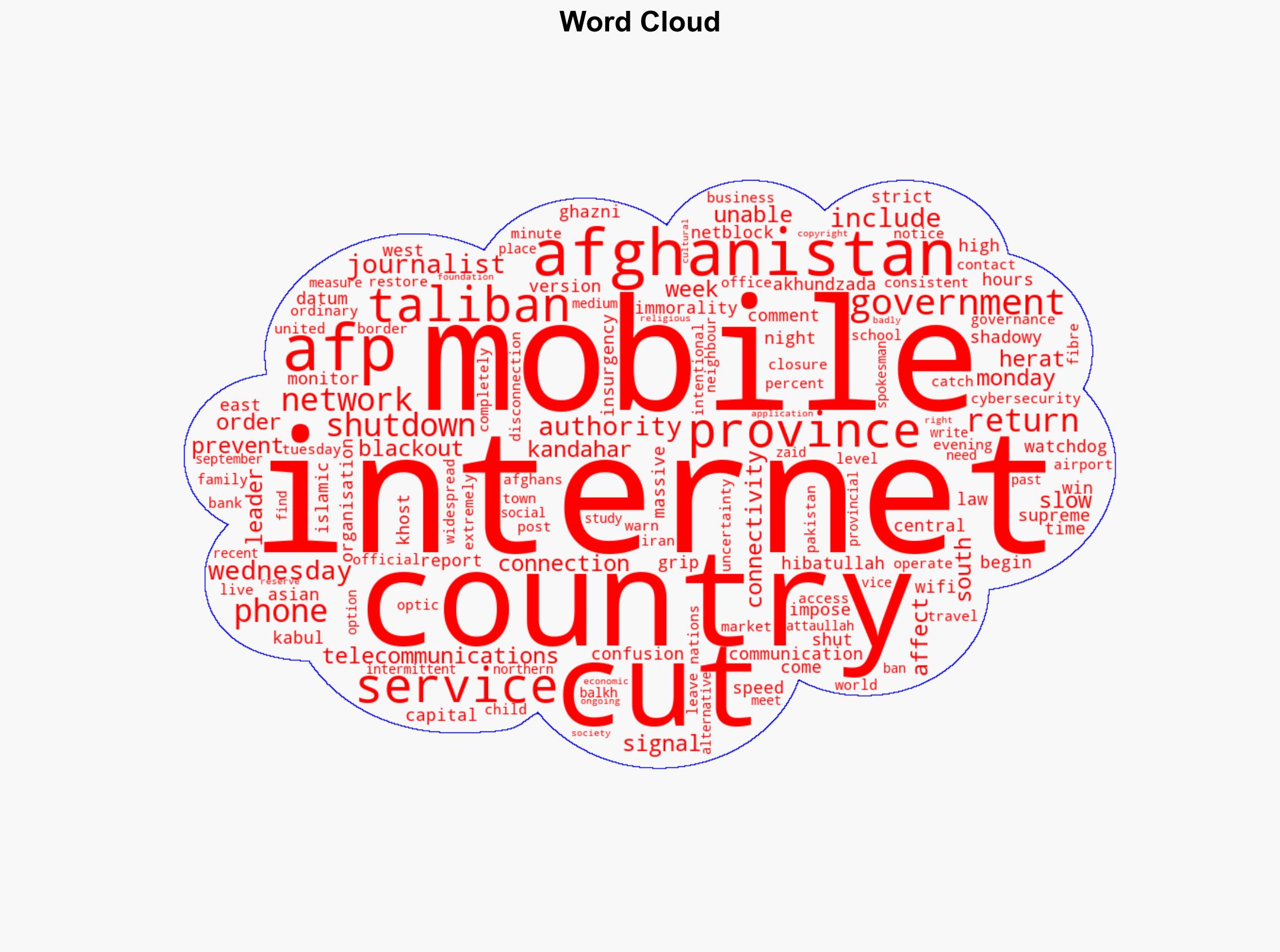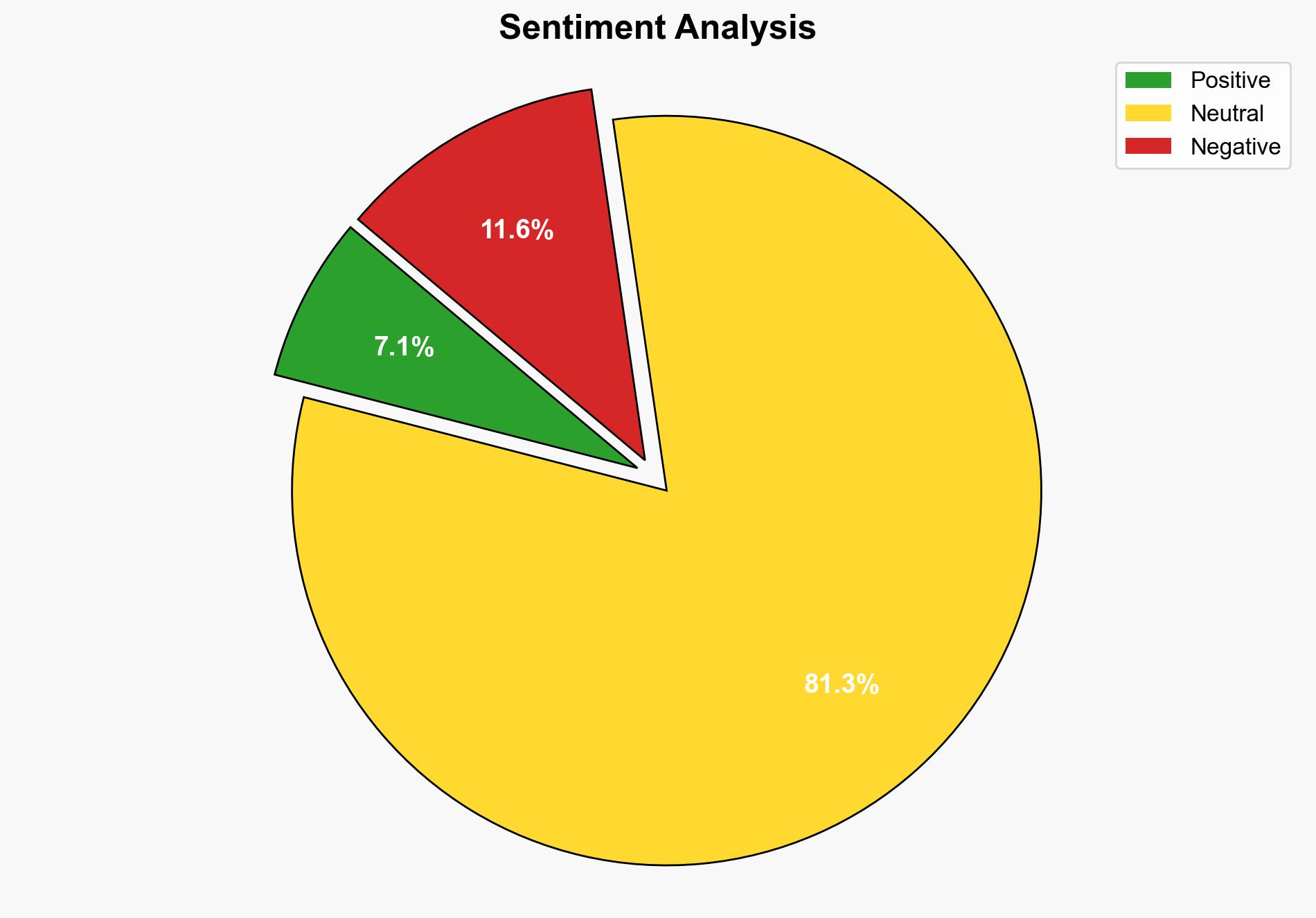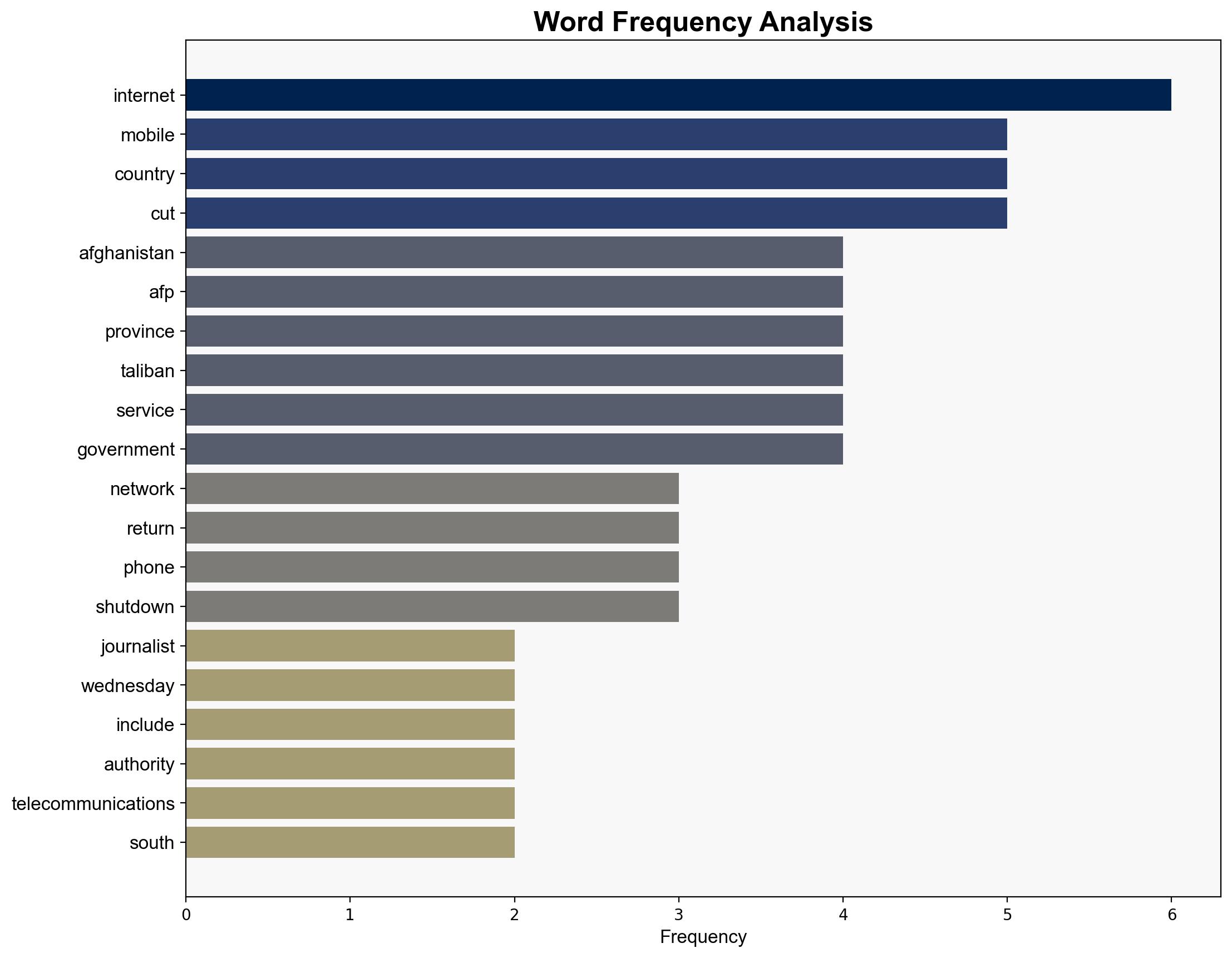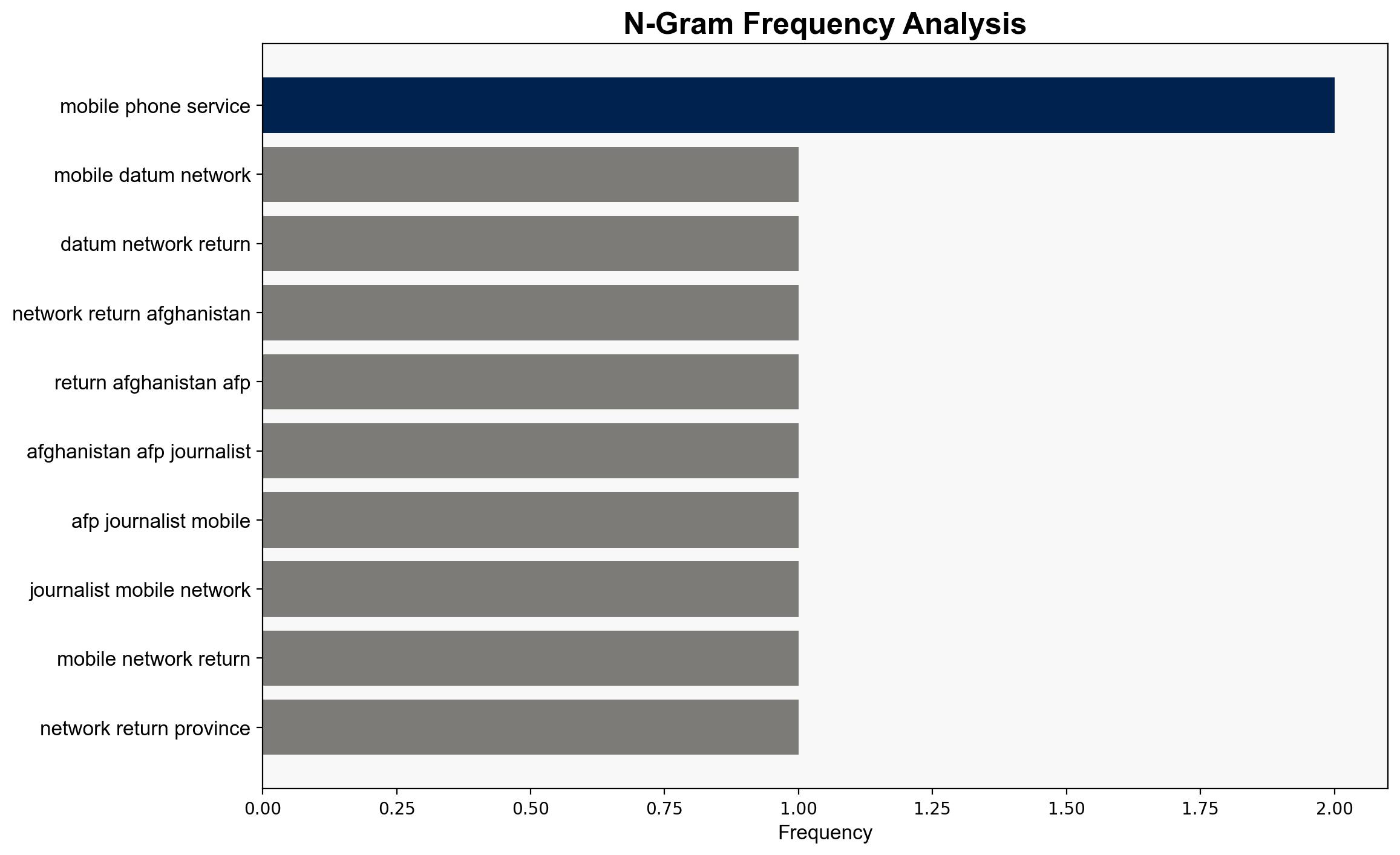Mobile And Data Networks Return Across Afghanistan AFP Journalists – International Business Times
Published on: 2025-10-01
Intelligence Report: Mobile And Data Networks Return Across Afghanistan AFP Journalists – International Business Times
1. BLUF (Bottom Line Up Front)
The restoration of mobile and data networks in Afghanistan, following a government-imposed blackout, suggests a strategic recalibration by the Taliban authorities. The most supported hypothesis is that the shutdown was a tactical move to control information flow amid internal or external pressures. Confidence in this assessment is moderate. It is recommended to monitor further telecommunications disruptions as potential indicators of political instability or strategic shifts by the Taliban.
2. Competing Hypotheses
1. **Hypothesis A**: The telecommunications blackout was a deliberate measure by the Taliban to prevent the spread of information that could incite unrest or challenge their authority, especially following recent insurgency activities.
2. **Hypothesis B**: The blackout was primarily a technical failure or a result of external cyber interference, rather than a deliberate action by the Taliban.
Using ACH 2.0, Hypothesis A is better supported due to the timing of the blackout coinciding with the Taliban’s historical patterns of controlling information and the subsequent restoration aligning with a strategic need to maintain some level of connectivity for governance and economic purposes.
3. Key Assumptions and Red Flags
– **Assumptions**: It is assumed that the Taliban have the capability and intent to control telecommunications as a means of maintaining power. It is also assumed that external actors did not significantly influence the blackout.
– **Red Flags**: The lack of official Taliban commentary on the shutdown raises questions about internal coherence and decision-making processes. The sudden restoration of services without clear explanation suggests potential internal disagreements or external pressures.
4. Implications and Strategic Risks
The blackout and its aftermath highlight the Taliban’s capacity to disrupt communications, posing risks to economic stability and international relations. This action could escalate tensions with neighboring countries and international bodies advocating for open communication channels. The potential for repeated disruptions could deter foreign investment and aid, exacerbating Afghanistan’s economic challenges.
5. Recommendations and Outlook
- Monitor telecommunications patterns for signs of further disruptions or policy changes by the Taliban.
- Engage with regional partners to establish contingency plans for communication blackouts.
- Scenario Projections:
- Best Case: Stable telecommunications with increased international engagement.
- Worst Case: Frequent blackouts leading to economic isolation and unrest.
- Most Likely: Intermittent disruptions as a tool for political control.
6. Key Individuals and Entities
– Hibatullah Akhundzada (mentioned as the Taliban’s supreme leader)
– Attaullah Zaid (provincial spokesman for Balkh)
7. Thematic Tags
national security threats, cybersecurity, counter-terrorism, regional focus




